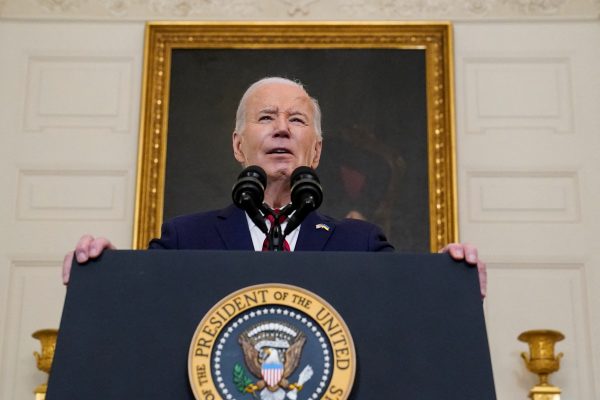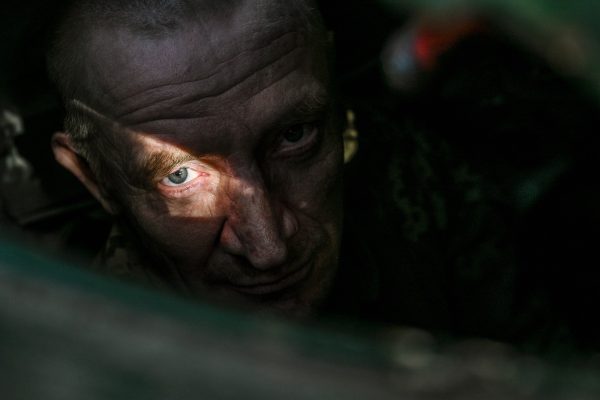For many years, Russian politicians, journalists, and opinion-makers have quite fancied a nuclear war. The enfant terrible of Russian politics, Vladimir Zhirinovsky, was probably the first senior politician to discover a market for nuclear threats against the West, and exploited it with some glee.
In 2015, he called for the nuclear annihilation of Turkey’s biggest city in “a huge tsunami and the death of nine million people” following the downing of a Russian combat aircraft, which killed one crew member.
He followed this with a call for a nuclear strike on the residence of Ukrainian president Petro Poroshenko in 2018 and later in the same year proposed “devastating nuclear strikes in many parts of the planet to destroy their will to fight against Russia forever.” Finally, in January 2022, not long before he fell into a coma and died, he called for the nuclear annihilation of the US and Europe as a way to “put the US on its knees” and punish the West for sanctions.
Zhirinovsky was widely seen as mentally erratic, but he was far from alone in his fondness for descriptions of the nuclear apocalypse. Not that the West took very much notice. No sane person in the West would make similar statements — not at least since the Dr. Strangelove movie and mass anti-nuclear protests in the 1980s. We came to believe that Russia shares the same views, that they “love their children too.” In fact, that sameness of outlook is questionable.
For many years, Russian state-owned media invested a lot of time and creativity in pushing the narrative that the country is still important because of nuclear weapons and their destructive capacity. In March 2014, shortly after the Crimea annexation, Putin’s top propagandist, the Vesti news anchor Dmitry Kiselev, proudly stated on air that President Barack Obama continued to seek Putin’s attention because “Russia is the only country that can turn the US into radioactive ashes”.
Behind Kiselev, a huge image of a nuclear mushroom cloud appeared with the words “radioactive ash” superimposed. The message was so popular in Russia, that in 2016 Kiselev repeated his show with the slogan, “Let’s talk on radioactive ashes again.” In April 2021, on the same state-run TV channel, another top propagandist anchor, Vladimir Solovyev, urged a nuclear strike in international waters to demonstrate Russia’s readiness for nuclear war. That idea remains current.
It is significant that these messages were first and foremost directed to the domestic, not the international public. Russia normalized nuclear threats and stoked the idea of nuclear weapons use to infect its population with jingoism and chauvinism.
Sometimes this took scary forms. In 2010, a popular TV show re-mastered a mocking version of a cult children’s cartoon song with new verses about nuclear missiles flying away to destroy the US. In 2019, the city chorus of St. Petersburg sang another mocking song about the nuclear elimination of the US during a concert in St. Isaac’s cathedral. “I cross the Atlantic on my nuclear submarine, and have a dozen warheads with a hundred megatons. I tell my gunner: aim at Washington!… The Norfolk base is sleeping, N-word are sleeping, I am sorry America, but it was useless to discover you 500 years ago. Now burn apart, you enemy land!”
This mockery was just one side of nuclear glamourization. Radical, religious-nationalist thinkers acted on another flank. In 2009, far-right Orthodox writer Yegor Kholmogorov, later a colleague of the assassinated extremist Darya Dugina, coined the idea of “Nuclear Orthodoxy” together with a far-right artist Alexey Belyaev-Gintovt, a member of Alexandr Dugin’s movement. This exceptionalist and anti-Western orthodoxy stated that Russia must dominate the world because the country possessed a unique moral strength. It should reach this goal through decisive military action and by blackmailing a declining West with nuclear weaponry.
The “Nuclear Orthodoxy” concept was de facto accepted by the Russian Orthodox Church. As long ago as 2009, Patriarch Kirill visited the city of Sarov — an important nuclear weapons research center, and the birthplace of St. Serafim of Sarov, a highly respected Russian Orthodox saint — and said that “it was God’s will to give our motherland the nuclear weapon in this very holy city”, and stressed that “the nuclear weapon which is being developed here now, helps to guard the sovereignty of our country”
Russia’s church smiles at such weapons. One of the most radical Orthodox priests, Dmitry Smirnov, who has called for violent attacks on other religious places of worship, was not only appointed the deputy rector of the Patriarchy’s most important St. Tikhon Orthodox university, but also a Dean of the Faculty of Orthodoxy of the Russian Strategic [Nuclear] Missile Forces Academy in Moscow.
No surprise then that religious arguments feature in the nuclear rhetoric of Vladimir Putin. In October 2018, speaking at the Valdai Forum, Putin said that in a nuclear war Russians will “go to heaven as martyrs”, and the Western citizens “will perish” (using a word usually employed to describe an animal’s death.)
Thereafter, military uniform patches with the slogan “They will perish, and we will go to heaven” became fashionable and have since been found on Russian military corpses in Ukraine.
An idea developed for internal propaganda has come full circle. It is not a joke. It was too widely believed, influenced Russia’s approach to the real world, and now needs to be decisively rejected, before real people get hurt in huge numbers.
Sergej Sumlenny is a German political expert with a particular focus on security and energy policy in Russia and Eastern Europe. From 2015-2021, he was an office director for Ukraine and Belarus at the German Heinrich-Böll Foundation. He holds a doctoral degree in political science.
Europe’s Edge is CEPA’s online journal covering critical topics on the foreign policy docket across Europe and North America. All opinions are those of the author and do not necessarily represent the position or views of the institutions they represent or the Center for European Policy Analysis.





